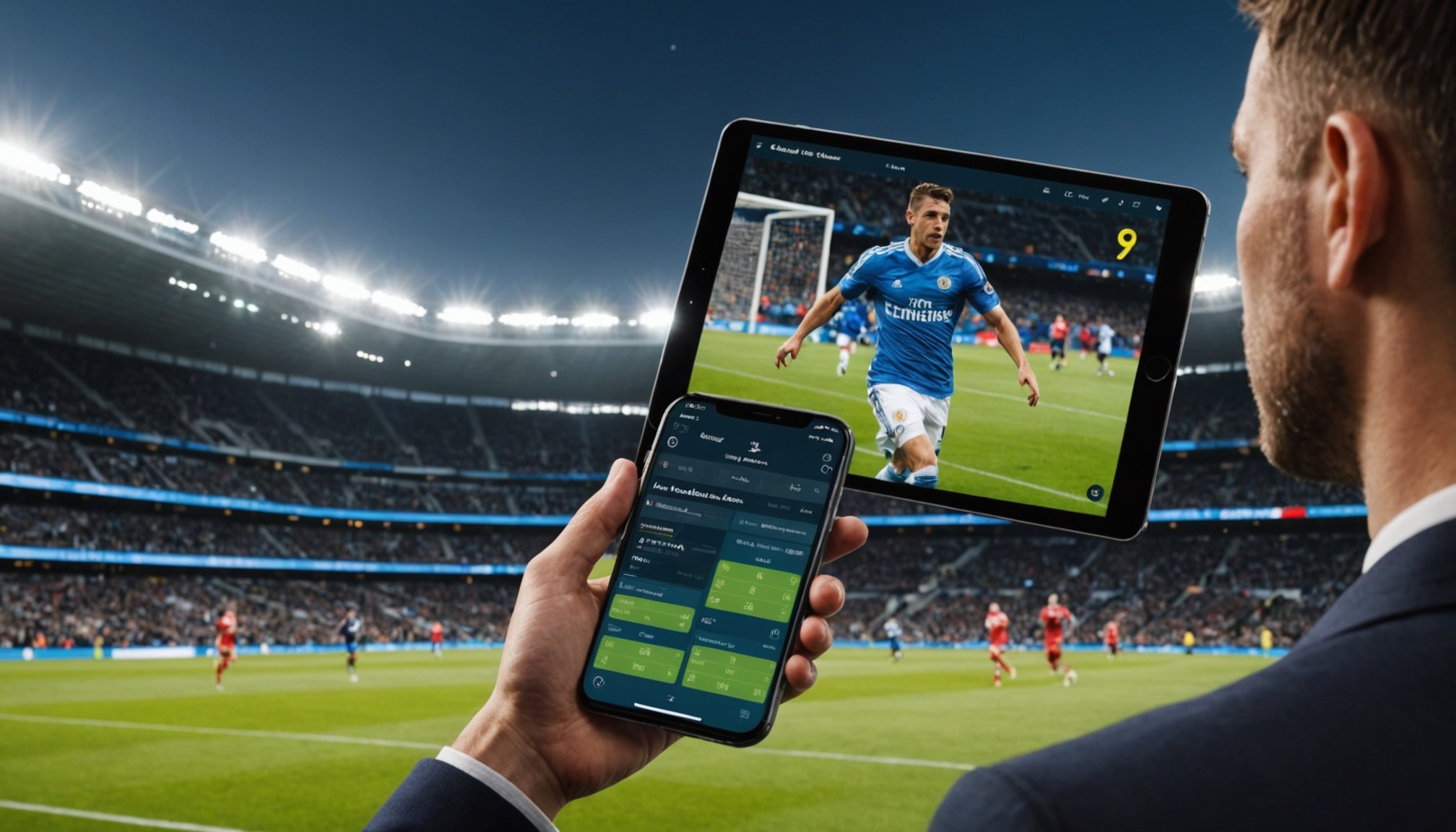Unlocking the Game: The Impact of Sports Analytics on Real-Time Decision Making in Football Matches
The Evolution of Sports Analytics in Football
Football, or soccer as it is known in some parts of the world, has undergone a significant transformation in recent years, thanks to the integration of advanced sports analytics. This shift from traditional methods to data-driven decision making has revolutionized how teams prepare, strategize, and execute their game plans. At the heart of this revolution is the use of artificial intelligence (AI), machine learning, and big data analytics.
From Basic Statistics to Advanced Predictive Models
Historically, football teams relied on basic statistical analysis and human intuition to make decisions. However, with the advent of advanced data analytics, teams can now leverage vast amounts of data to gain deeper insights into player performance, team strategies, and game outcomes. For instance, statistical learning tools can categorize player types, predict team trajectories, and evaluate the impact of specific actions on the field, such as passes or tackles leading to goals.
Also read : How can UK football clubs improve their community relations to foster local support?
Real-Time Data Collection and Analysis
The ability to collect and analyze data in real-time has become a cornerstone of modern football analytics. Here’s how it works:
Wearable Sensors and Video Footage
Wearable sensors and video footage provide a wealth of data on player movements, heart rates, and other performance metrics. For example, the NBA’s use of Second Spectrum’s AI-powered tracking system to capture and analyze every movement of players and the ball during games is a prime example of this technology. This data is used to assess player efficiency, team strategies, and even predict future performance.
Also read : Illuminating Performance: How Artificial Lighting Influences Evening Football Matches and Player Efficiency
Computer Vision and Machine Learning
Computer vision, a subset of AI, is used to track players, analyze their postures, and predict injuries by examining how they walk and their level of tiredness. This technology can also simulate game scenarios, helping coaches with strategic planning and real-time tactical adjustments.
Predictive Analytics and Injury Prevention
Predictive analytics is one of the most powerful tools in the arsenal of sports analytics. Here are some ways it is making a significant impact:
Predicting Injuries
AI models can predict the likelihood of injuries by analyzing data from various sources, including player fitness levels, workload, sleep patterns, and biomechanical information. The NFL, for example, uses Sparta Science’s AI platform to assess players’ movement patterns and identify potential injury risks. This allows coaching staff to reduce a player’s training load or recommend specific exercises to address weaknesses.
Customized Training Regimens
Generative AI can create tailored training programs designed to enhance performance and reduce injury risks. These programs focus on each athlete’s unique needs, ensuring that training is optimized for maximum benefit while minimizing the risk of injury.
Enhancing Game Strategies with AI
AI is not just about preventing injuries; it is also about enhancing game strategies. Here’s how:
Decoding the Opposition
AI can analyze vast amounts of data on opponents, identifying patterns and tendencies that can inform coaching decisions. For instance, in football, AI can simulate how an opponent might react to certain playing styles, offering insights into potential game outcomes. This helps coaches develop more effective game plans and make real-time adjustments.
Tactical Analysis and Decision Making
AI assists coaches in evaluating historical performance data to inform in-game adjustments. In baseball, the Houston Astros use AI to process live game data and suggest optimal pitching strategies and batting lineups. Similarly, in rugby, AI analyzes player movements and game dynamics to suggest improving team formations and player positioning, optimizing in-game strategies and performance.
Fan Engagement and Personalized Experiences
Sports analytics is not just about improving team performance; it also enhances the fan experience.
Personalized Content and Interactions
Generative AI can create personalized game highlights for each user based on their preferences and viewing history. During live games, AI-generated graphics and statistics enhance the viewing experience, providing real-time insights that were previously unavailable. Fans can now get instant responses to their queries about stats, schedules, or ticket information, making their engagement with the game more immersive and interactive.
Referee Assistance and Decision Making
AI is also playing a crucial role in officiating sports events.
AI-Assisted Offside Technology
FIFA has implemented AI-assisted offside technology that uses computer vision and machine learning to make precise offside calls. This system tracks the positions of players and the ball in real time, alerting officials to offside positions almost instantly. Similar systems are being developed and implemented across various sports to assist referees in making more accurate decisions and maintaining the integrity of competitions.
Practical Insights and Actionable Advice
For teams looking to leverage sports analytics, here are some practical insights and actionable advice:
Investing in Data Collection Infrastructure
Teams need to invest in robust data collection infrastructure, including wearable sensors, video footage analysis, and advanced tracking systems. This ensures that they have the necessary data to drive their analytics efforts.
Building a Data-Driven Culture
Coaches and team managers must adopt a data-driven culture, where decisions are made based on insights derived from data analysis rather than intuition alone.
Continuous Learning and Adaptation
The field of sports analytics is constantly evolving. Teams must stay updated with the latest technologies and methodologies to remain competitive.
Examples and Case Studies
Here are some concrete examples of how sports analytics is being used in football:
The Houston Astros
The Houston Astros in baseball use AI to process live game data and suggest optimal pitching strategies and batting lineups. This approach has significantly improved their game strategy and decision making.
The NBA’s Second Spectrum
The NBA’s use of Second Spectrum’s AI-powered tracking system is a prime example of how real-time data analysis can enhance team performance and fan engagement. This system captures and analyzes every movement of players and the ball during games, providing valuable insights into player efficiency and team strategies.
Table: Comparative Analysis of AI Applications in Different Sports
| Sport | AI Application | Benefits |
|---|---|---|
| Football | Predictive modeling of player performance, injury prevention, and game strategy optimization | Enhanced player performance, reduced injury risk, improved game strategies |
| Basketball | Real-time tracking of player movements, predictive analytics for game outcomes | Improved player efficiency, better team strategies, enhanced fan engagement |
| Baseball | AI-driven pitching strategies and batting lineups | Optimized game strategies, improved team performance |
| Rugby | Analysis of player movements and game dynamics for tactical improvements | Enhanced team formations, improved in-game strategies |
| Golf | Swing analysis and course simulation | Personal performance improvement, strategic game planning |
Quotes from Experts
-
“Data and machine learning within sports and sports technology have been transformative. The integration of data and machine learning in sports has evolved from basic statistical analysis to advanced predictive models, supporting data-driven decision-making.” – Professor Baihua Li, Professor of Artificial Intelligence and Machine Learning at Loughborough University.
-
“The integration of artificial intelligence (AI) technologies such as statistical learning, game theory, and computer vision has revolutionized football analytics, offering teams unprecedented insights into player performance, game strategies, and injury prevention.” – XenonStack Blog.
The impact of sports analytics on real-time decision making in football matches is undeniable. From predicting injuries and optimizing game strategies to enhancing fan engagement and assisting referees, AI and machine learning are transforming the sport in multiple ways. As the technology continues to evolve, it is clear that teams that embrace data-driven insights will have a significant competitive edge.
Key Takeaways
- Data-Driven Decision Making: Sports analytics enables teams to make decisions based on real-time data analysis rather than intuition.
- Predictive Analytics: AI models can predict injuries, game outcomes, and player performance, allowing for proactive strategies.
- Enhanced Fan Engagement: Personalized content and real-time statistics enhance the fan experience.
- Continuous Learning: The field of sports analytics is constantly evolving, requiring teams to stay updated with the latest technologies and methodologies.
As we move forward, it is exciting to think about the potential future applications of AI in sports. Whether it is through more advanced predictive models, enhanced computer vision, or new forms of fan interaction, one thing is clear: the future of football is data-driven, and it is here to stay.











